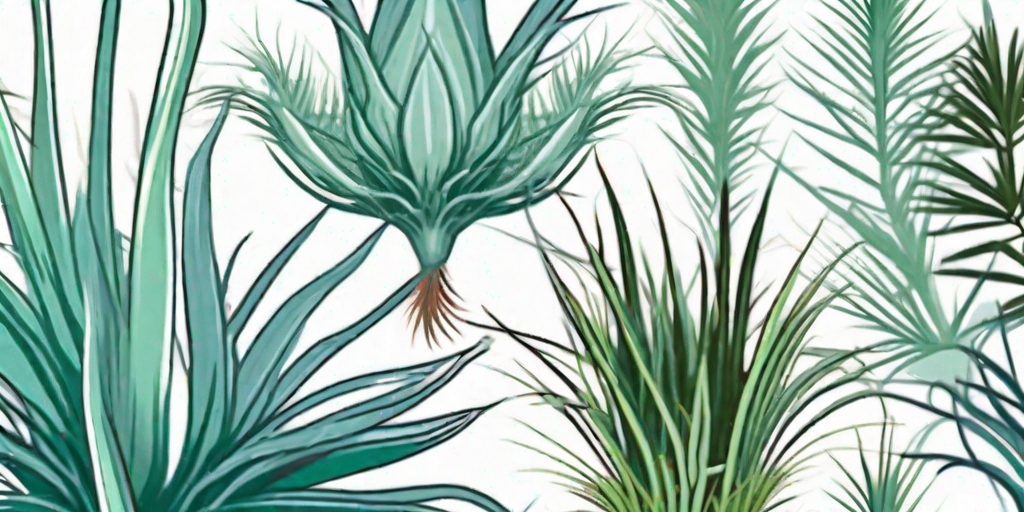
Welcome to the wonderful world of Tillandsia, where the air is fresh, the plants are quirky, and the gardeners are always on the hunt for the next unique addition to their collection. If you're a plant enthusiast looking for a new challenge, or a beginner looking for a low-maintenance plant, you've come to the right place. So, buckle up, plant lovers, as we embark on a journey to discover the beauty of Tillandsia.
The Intriguing World of Tillandsia
Known for their ability to grow without soil, Tillandsia, or air plants as they are commonly known, are part of the Bromeliad family. These fascinating plants have over 650 species, each with its unique characteristics. They are native to the forests, mountains, and deserts of Central and South America, the southern United States, and the West Indies.
What makes Tillandsia so intriguing? Well, it's their ability to survive in a variety of environments. They can thrive on rocks, tree trunks, and even telephone wires! These plants are epiphytes, meaning they absorb water and nutrients through their leaves, not their roots. Their roots are primarily used for anchoring themselves to their host.
Understanding Tillandsia's Unique Needs
Despite their hardy nature, Tillandsia do have some specific needs. They require bright, indirect light and prefer humid environments. Watering is a bit tricky; too much can cause rot, while too little can lead to dehydration. The key is to mist them regularly and give them a good soak every 1-2 weeks.
Temperature-wise, Tillandsia are quite adaptable. They can tolerate temperatures as low as 10 degrees Celsius and as high as 32 degrees Celsius. However, they do prefer a more moderate climate, ideally between 15 and 25 degrees Celsius.
Choosing the Perfect Tillandsia for Your Garden
With so many species to choose from, picking the perfect Tillandsia for your garden can be a daunting task. But fear not, dear reader, for we have compiled a list of some of the most popular and easy-to-care-for Tillandsia species to help you make your decision.
Remember, the perfect Tillandsia for you is the one that fits your lifestyle and environment. So, without further ado, let's dive into the world of Tillandsia species.
Tillandsia Ionantha
Meet the Tillandsia Ionantha, a small and hardy air plant that is perfect for beginners. This species is known for its vibrant green leaves that turn a beautiful red when it's about to bloom. The Ionantha produces purple flowers, adding a pop of color to your garden or home.
Ionantha prefers bright, indirect light and requires regular misting. It's a great choice for those who want a low-maintenance plant that still packs a visual punch.
Tillandsia Xerographica
Next up is the Tillandsia Xerographica, often referred to as the "Queen of Air Plants". This species is known for its large, silvery leaves that curl in a rosette pattern. The Xerographica can grow up to three feet in diameter and produces a spectacular bloom that can last for months.
The Xerographica prefers bright light and less frequent watering than other species. It's a great choice for those looking for a statement piece for their garden or home.
FAQs About Tillandsia
How often should I water my Tillandsia?
Watering frequency depends on your environment. If you live in a dry area, you might need to mist your Tillandsia daily and give it a good soak weekly. In more humid areas, misting a few times a week and soaking every other week should suffice.
Can Tillandsia survive indoors?
Absolutely! Tillandsia are great indoor plants. They just need a bright spot away from direct sunlight. Remember to keep them well-ventilated as they love fresh air.
Do Tillandsia need soil?
No, they don't. Tillandsia are epiphytes, which means they absorb nutrients through their leaves. Their roots are used for anchoring, not for absorbing water and nutrients like other plants.
Conclusion
There you have it, a comprehensive guide to unleashing the beauty of Tillandsia. These quirky, low-maintenance plants are a great addition to any garden or home. With their unique needs and diverse species, Tillandsia are sure to keep any plant enthusiast entertained.
So, what are you waiting for? Start your Tillandsia journey today and discover the joy of air plants. Happy gardening!















